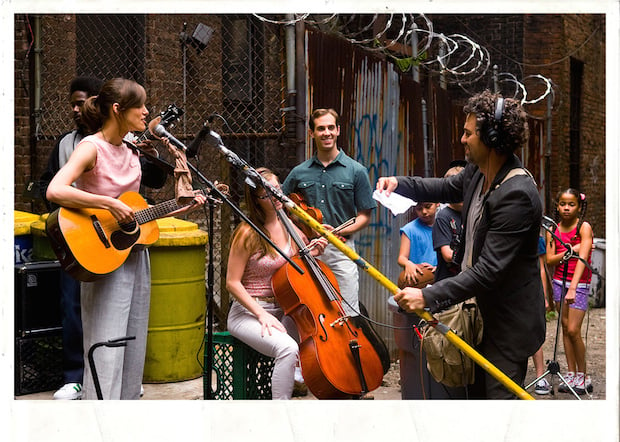 Photo by Andrew Schwartz
Photo by Andrew Schwartz
Recording takes a lot of time. It takes a lot of patience. And, for some, it can cost a lot of money. While some artists may spend thousands in studio time before hitting on a tune that sticks, others prefer to gain popularity before spending that sort of money. Today’s technology, mixed with an understanding of acoustics and engineering, can save you lots of time and dough. So if you're ready to create your own DIY recording studio, follow these four steps to make it happen:
1. Plan your space
As tempting as it may be to just plop yourselves in the most convenient room, there are many factors to consider: How is the space? What’s the room shaped like? Are the ceilings high? What's the ventilation situation?
Whether or not you've even stumbled into an introductory music principles course, all of this impacts your sound – and even your comfort. Fans and ventilation systems can be picked up on recordings, so if your recording space gets stuffy, be prepared to get warm!
I’ve often run into recording spaces that warn, "No room for drums." That’s understandable, given the extra space and mic setup a drum set requires. But if you're planning on laying down drum tracks, you’re going to need the space (physically and acoustically).
As for soundproofing your space, there are tons of helpful suggestions, especially for vocal booth hacks.
2. Plan your recording tools
Well, of course you have your instruments ready. What about the mics? A reliable DAW?
While Pro Tools had been drilled into my head as the industry standard back in college, every job I've had has used a range of software. One of the most popular (and budget-friendly) options is Reaper, which also offers a great trial period and lots of flexibility.
Make sure you check out the pickup pattern on your mics. I have seen this go wrong in vocal booths before, even with the right mic! It takes one bump (on a multi-pattern mic) to change the pickup pattern, and, all of a sudden, you're gettng sound that you don't want.
3. Plan your schedule
This is more than just planning around your work day or social life. Is there a baby in the apartment next to you? Do your neighbors know you're a musician? Is it a shared room?
In high school, we knew that it was time to start wrapping up once my mom got home from work. (I'm sure the last thing she wanted to hear was a high school rock band after teaching junior high all day!) Even my sister and friends, who are all musicians, had a problem when their downstairs neighbors would start recording and practicing metal at 9:00 p.m. on weeknights. When asked, one of the tenants countered that he didn't realize his upstairs neighbors had "real jobs." Come on, guys, we have to be considerate!
And if you're recording in a space that someone else will be using next, don't leave your trash there! I once went in to set up a session I was engineering, only to find an old bag of pretzels and coffee stuck behind a soundproofing panel. This is how we get mice – or at least bad smells.
4. Be comfortable
Finally, get cozy, because this is going to be more than a one-day adventure. Stay hydrated, wear comfortable clothes, and, oh yeah, thank and be kind to your engineer – especially if he or she isn't in the band!
Farah Joan Fard is a writer, drummer, and media professional with experience in music journalism, licensing, performance, producing, and audio engineering. You can follow her work at @LaParadiddle.







